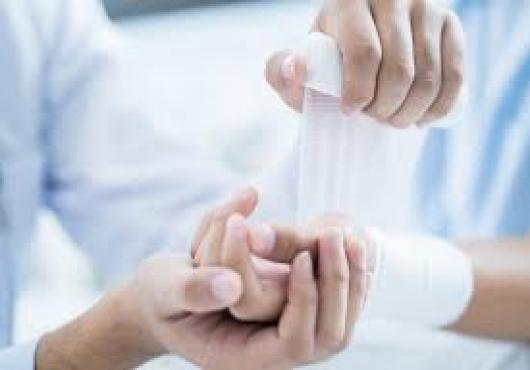
Globally, wound care products are becoming more advanced in terms of helping drastically reduce recovery time and being increasingly non-invasiveness. Manufacturers are focusing more on bioactive wound care products, owing to surging demand from healthcare providers. Biomaterials are projected to continue to gain traction among manufacturers, with the market expected to be flooded with superabsorbent products.
Manufacturers are now focusing on developing multipurpose wound care. Products that can help in treating different wound types, while reducing treatment time are in vogue among healthcare professionals. However, manufacturers have to ensure that they are not adding to the cost of the end product, including advanced features to the end-user. Wound dressing products and solutions that are expected to offer advanced benefits in a cost-effective manner. This is a key challenge for manufacturers, especially in price-sensitive markets of the Asia Pacific and Latin America.
Although advanced wound care products hold a lot of promise, currently, their development and total sales are at a nascent stage as compared to conventional wound care products. Manufacturers are gradually making the shift from conventional to advanced, but lack of a solid R&D and ever-increasing costs are a key hindrance to market growth. Another hindrance to the advanced product is a majority of conventional wound care products often heal a wide variety of wounds. Communicating the benefits of advanced wound care products to healthcare providers is important to factor for their growth. However, an important point to note here is that advanced wound care products are, indeed, the future, and small suppliers should not ignore this segment.
According to the report titled "Global Wound Dressing Market, By Product Type (Traditional, Advanced), Property (Anti-microbial, Non-Anti-microbial), Application (Surgery, Trauma, Burns, Chronic Wounds), End-user (Hospitals, Clinics, Ambulatory Surgical Centers), and Geography - Trends, Analysis, and Forecast till 2024", published by Coherent Market Insights, the market for Wound Dressing Market is expected to surpass US$ 13.8 Billion the end of 2024 at a CAGR of 6.0% during 2016–2024.
State of the Global Wound Dressing Market
The global wound dressing market is estimated to reach approximately US$ 8.5 billion by the end of 2021. It is expected that global revenues will grow at a CAGR of 6% through 2021. Adoption of new technology in healthcare, advanced wound dressing treatment options are expected to gain traction in both developing and developed markets alike.
A significant rise in the number of diabetic population, rising incidence of sports injuries, and an increase in overall demand for minimally invasive dressing options are expected to fuel demand for wound management products and services during the forecast period (2016-2024).
Advancement in the field of biotechnology, coupled with the increasing awareness among the general population and healthcare providers is paving way for the new era of wound treatment. The introduction of this modern technology is helping patients by limiting their stay in hospitals and healing surgical wounds in a short duration.
Key Players: An insight of market Share
Key players operating in this market include HARTMANN, Smith and Nephew, 3M, BSN medical, Integra LifeSciences, Coloplast, Derma Sciences, Medtronic Plc. North America is a dominant market for wound dressing, while Asia is poised to witness the highest CAGR growth, owing to its large population and rise in ulcer cases. Various other factors like changing lifestyles, especially erratic eating habits will continue to fuel the demand for wound dressing products in the future as well.
Prominent Product Types & Applications
The global wound dressing market is broadly classified into two segments, namely conventional wound care and advanced wound care.
Conventional wound care is confined to small burns, absorbing fluids, to stop bleeding, isolating infections, whereas advanced wound dressing is used in various kind of ulcers which includes pressure ulcers, venous leg ulcers, arterial ulcer, diabetic ulcer, burns, and surgical wounds. Advanced wound dressing works also differs from the conventional one. From maintaining the temperature to allowing adequate oxygen supply, this dressing technique also comforts the patient by easing pain with dressing changes.
The market is consumed mainly by hospitals and wound clinics. However, the products are so reliable that people do not hesitate to try at home. For example, a hydrogel can be applied and removed in no time and is very popular in the U.S.
To know more about the latest market trends and insights, read the report titled, “GLOBAL WOUND DRESSING MARKET, BY PRODUCT TYPE (TRADITIONAL, ADVANCED), PROPERTY (ANTI-MICROBIAL, NON-ANTI-MICROBIAL), APPLICATION (SURGERY, TRAUMA, BURNS, CHRONIC WOUNDS), END-USER (HOSPITALS, CLINICS, AMBULATORY SURGICAL CENTERS), AND GEOGRAPHY - TRENDS, ANALYSIS, AND FORECAST TILL 2024”, published by Coherent Market Insights. Click on the link below to access the report –
https://www.coherentmarketinsights.com/market-insight/wound-dressing-market-142






